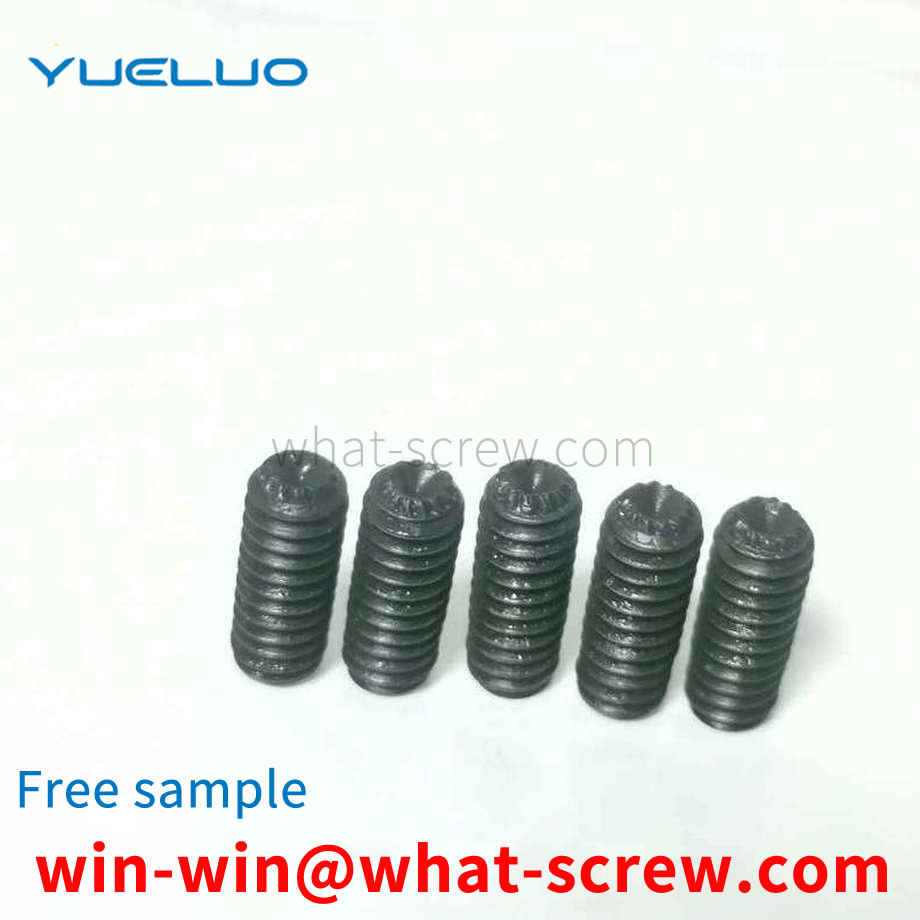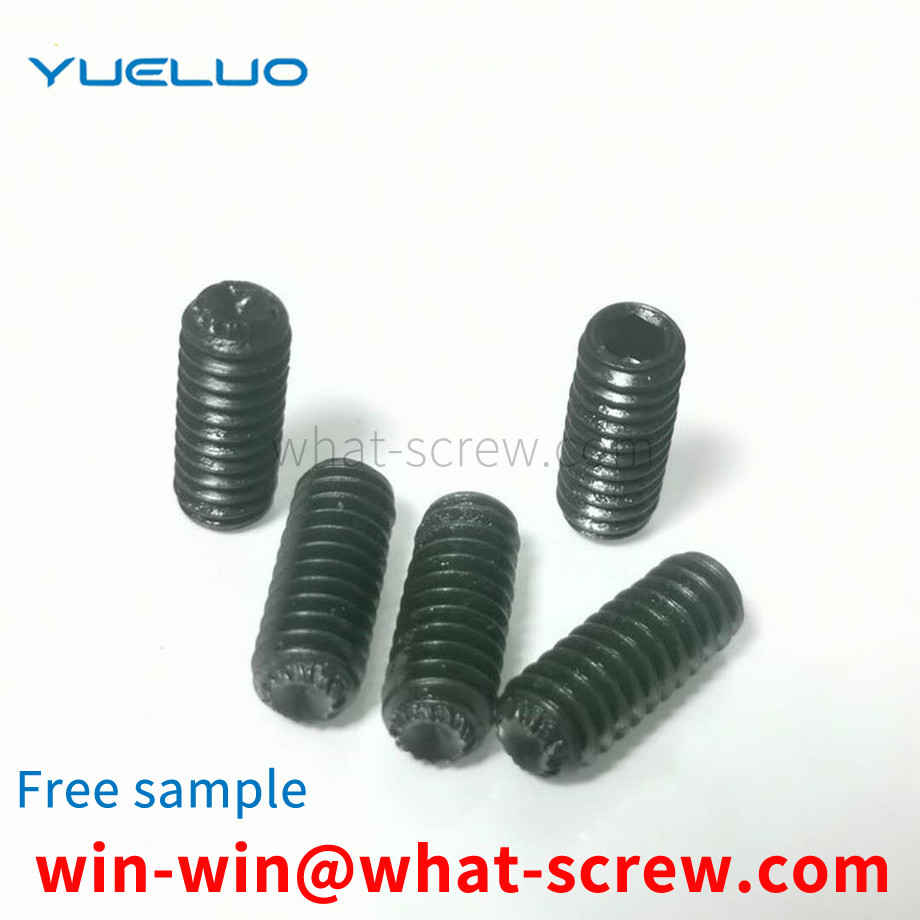Shaft retaining ring (hereinafter referred to as retaining ring) is a very common part and is widely used in shaft parts. The existing solution for pressing the retaining ring is: place the retaining ring sleeve in the chamfering section or the guiding section of the shaft head, and then use an indenter whose inner hole diameter is larger than the diameter of the shaft head to press the retaining ring into the groove, and then press the retaining ring into the groove through the shaft head. The retaining ring is combined with the slot to prevent the indenter from continuing to move downward.
T-bolts are often used in conjunction with flange nuts, which are standard supporting connectors when installing corner fittings, and can be automatically positioned and locked during the installation process. At present, in the welding process of T-bolts, there is often a method of manual welding. Using such a method, the manufacturing cycle is long, the labor intensity is high, the production efficiency is low, and the welding quality is difficult to guarantee.
Standard introduction Standard code name Material coating GB/T65-2000 slotted cylindrical head screw steel, stainless steel galvanized passivated or untreated GB/T67-2000 slotted pan head screw steel, stainless steel galvanized passivated or not Treated GB/T68-2000 slotted countersunk head screw steel, stainless steel galvanized passivated or untreated GB/T70.1-2008 hexagon socket head screw steel, stainless steel galvanized passivated or untreated GB/T70 .2-2008 Hexagon socket head screw steel, stainless steel galvanized passivated or untreated GB/T70.3-2000 Hexagon socket head countersunk head screw steel, stainless steel galvanized passivated or untreated GB/T71-1985 Open Slotted taper end set screw steel, stainless steel galvanized passivated or untreated GB/T73-1985 slotted flat end set screw steel, stainless steel galvanized passivated or untreated GB/T74-1985 slotted concave end set screw Screw steel, stainless steel galvanized passivated or untreated GB/T75-1985 slotted long cylindrical end set screw steel, stainless steel galvanized passivated or untreated GB/T77-2000 hexagon socket flat end set screw steel, stainless steel Galvanized passivated or untreated GB/T78-2007 Hexagon socket set screw steel, stainless steel galvanized passivated or untreated GB/T79- 2000 Hexagon socket set screw steel, stainless steel galvanized passivated Or untreated GB/T80-2007 Hexagon socket set screw steel, stainless steel galvanized passivated or untreated GB/T818-2000 Cross recessed pan head screw steel, stainless steel galvanized passivated or untreated GB/ T819.1- 2000 Cross recessed countersunk head screw steel 4.8 grade steel galvanized passivation GB/T819.2- 1997 Cross recessed countersunk head screw steel, stainless steel A2-70, non-ferrous metal CU2 or CU3 steel, stainless steel or non-ferrous metal plated Zinc passivated or untreated GB/T820- 2000 Cross recessed half countersunk head screw steel, stainless steel galvanized passivated or untreated GB/T822- 2000 Cross recessed cylinder head screw steel, stainless steel galvanized passivated or untreated Treated GB/T823-1988 cross recessed small pan head screw steel, stainless steel galvanized passivated or untreated GB/T833-1988 slotted large cylindrical head screw steel, stainless steel galvanized passivated or untreated GB/ T837- 1988 Slotted pan head non-prolapse screw steel, stainless steel galvanized passivated or untreated GB/T838- 1988 Hexagon head non-prolapse screw steel, stainless steel galvanized passivated or untreated GB/T2671.1- 2004 Hexagon socket head low cylindrical head screw GB/T2671.2-2004 Hexagon socket head screw GB/T2672-2004 Hexagon socket head pan head screw steel galvanized passivation GB/T2673-1986 Hexagon socket countersunk head screw steel plated Zinc passivation GB/T13806.1-1992 Fasteners for precision machinery ten Slotted Screws Steel, Copper: H68 or HP59-1 Zinc Passivated or Untreated
Yueluo relates to a self-tapping screw according to the preamble of claim 1. A self-tapping screw is known from EP0623759B1, the ratio of the outer diameter to the smaller diameter of the self-tapping screw is about 1.25-1.5, the ratio of the outer diameter to the pitch lead is about 1.5-1.6 and the thread The flank angles of , are < 50° and ≥ 35°. EP0433484B1 proposes a self-tapping screw whose thread is provided with cutting teeth of approximately arcuate design, and the cutting edge and the thread crest are at the same horizontal position and are set in opposite directions. One purpose of Yueluo is to realize a general type of self-tapping screw so that it can be screwed particularly easily into holes drilled in concrete or other materials such as bricks and the like. According to Yueluo, this object is achieved by the features in the characterizing part of claim 1, and surprisingly, it has been found that the parallel arrangement of the flanks, ie with a flank angle of about 0°, will make screwing particularly easy when screwing in , especially if the diameter of the hole varies within an allowable tolerance. One reason may be due to the fact that there is no lateral pressure on the material screwed into the thread, even if threads of different depths are cut in concrete or other materials such as brick, chipped plywood, or hardwood. The thread cuts into the material over its entire width by cutting grooves. In particular according to the embodiment of claim 13 the material cut out when screwing in the screw can be discharged without any accumulation, the dependent claims reflecting many advantages of further embodiments.
The isolating switch in the substation has a large workload for maintenance. The transmission parts such as the isolating switch connecting rod are mostly connected by cylindrical pins. The shaft-pin fit is generally 1mm, which is tight. If the cylindrical pin is disassembled during the maintenance process, it is often due to corrosion and mechanical deformation. It is difficult to proceed smoothly for other reasons, and if the working environment is a small space, it is more difficult to disassemble. In traditional operations, grinding, hard prying, or beating with a hand hammer are often used to disassemble, which will further deform the pins, and when the space is small, it is difficult to use tools such as hand hammers. solve.
We have many years of experience in the production and sales of screws, nuts, flat washers, etc. The main products are: brass screws, torx star handle nuts, blue and white zinc plated nuts, production screws and other products, we can provide you with suitable screws Firmware Solutions.



















 Service Hotline
Service Hotline




